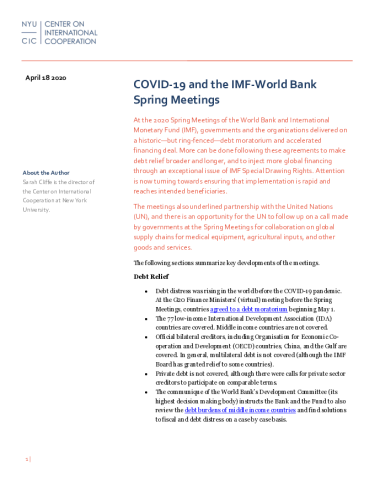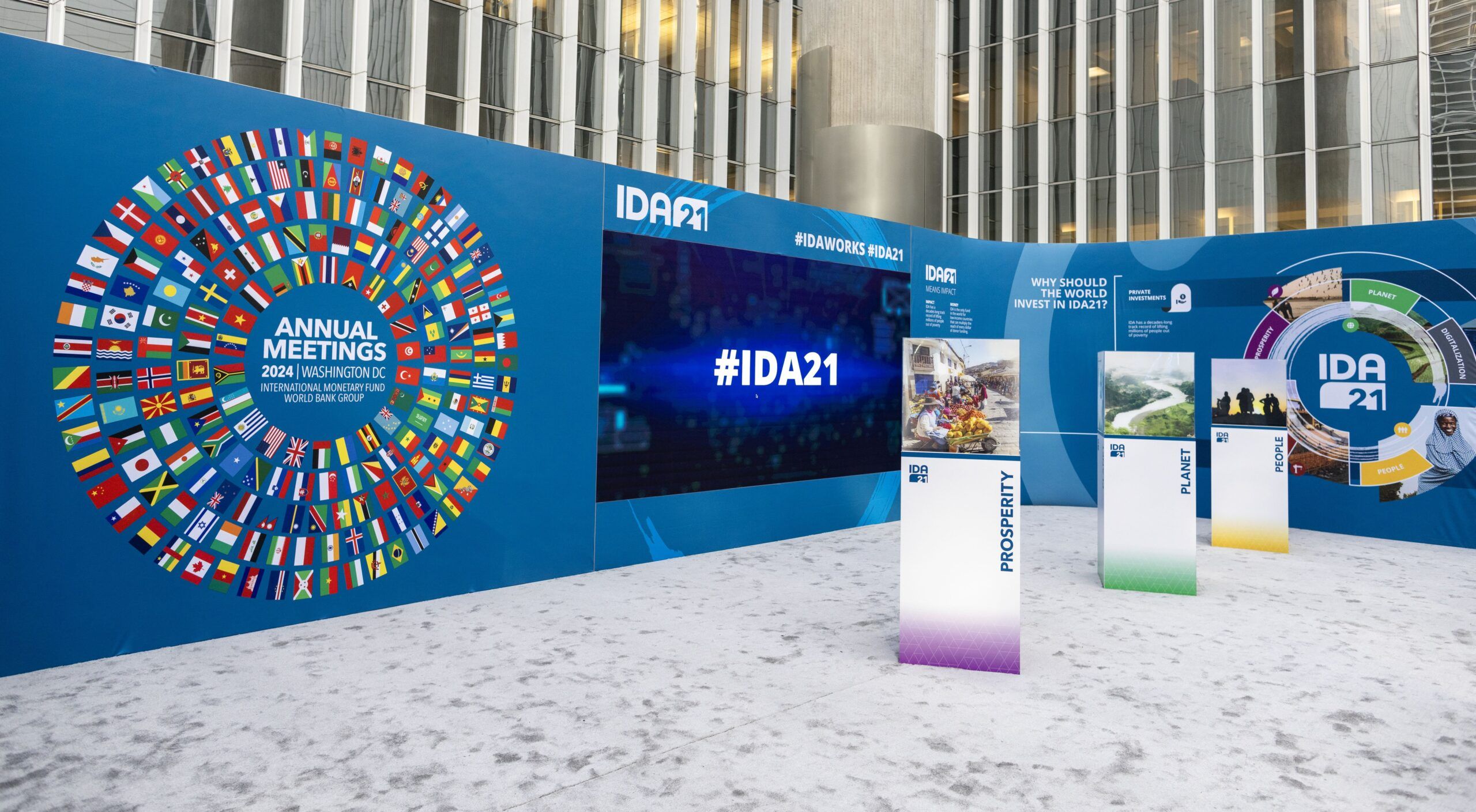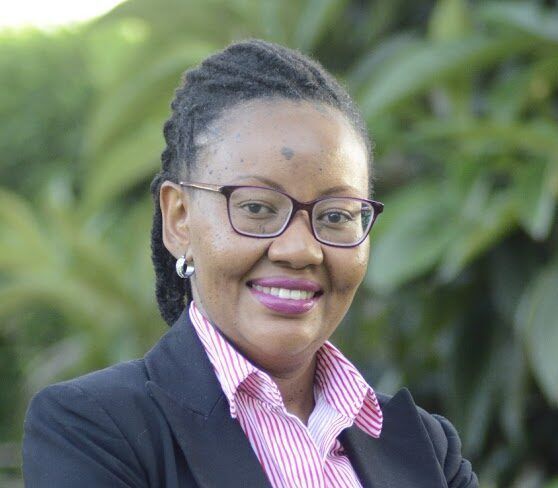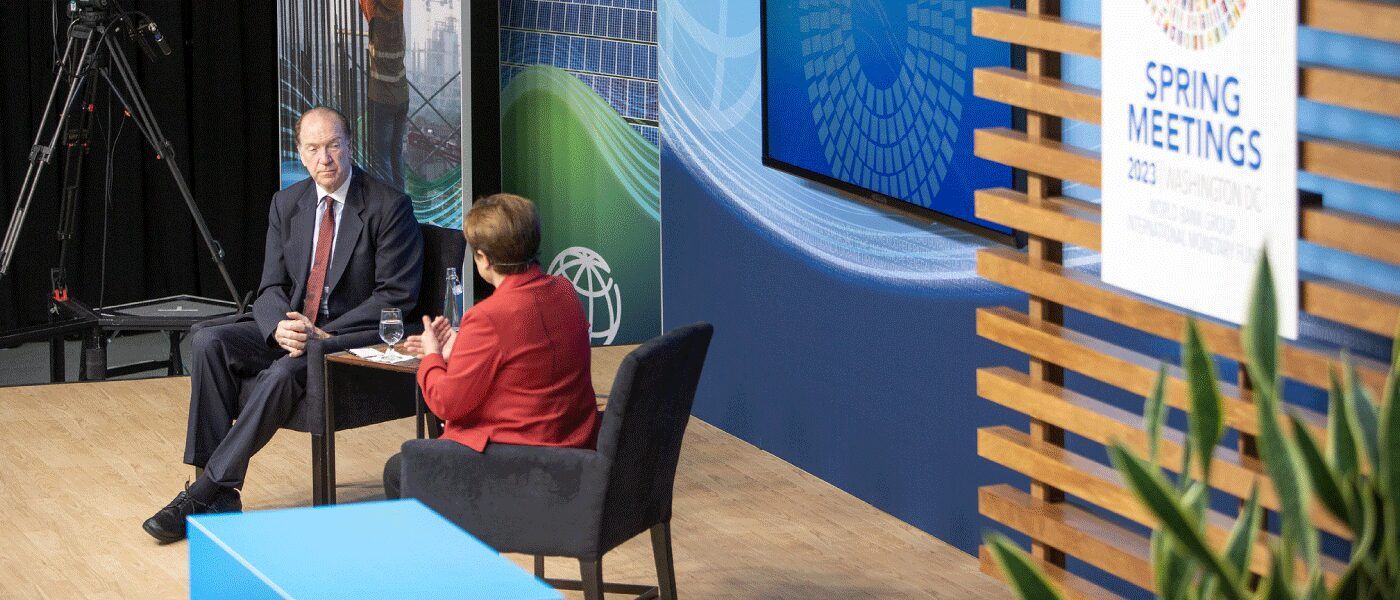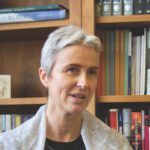Global Outlook
This was her clarion call as she gave highlights from the IMF Outlook, Global Economy and Policy priorities. Her key message—inflation is cooling off, but prices remain sticky, so consumers do not have relief yet. But this was not the most difficult message, and the even more difficult message (especially for developing countries) was that growth is likely to remain sluggish in developing countries at around 4.2 percent in 2024–2025, debt will remain high, and geo-economic fragmentation has greatly constrained trade. This high debt, low growth scenario for developing countries is a double jeopardy. “Countries are facing a trilemma. We all know what we need to do to spur growth, we just need to it,” she echoed. Some of the solutions she provided included—a shift towards rebuilding fiscal buffers and investing in growth enhancing reforms. Consolidate the fiscal position credibly but do not suffocate your power to grow. The punch had been delivered. Developing countries need to do more to pull themselves out of this mess.
This spurs a series of questions:
- What will all this mean in practical terms for the more than 35 countries that are in debt distress or are at high risk of debt distress?
- What does this mean for the 48 countries that are spending more on debt servicing than on health and education?
- How can these countries consolidate credibly without suffocating growth?
- How can they even just consolidate without sinking completely?
- How would countries build fiscal buffers when they have net outflows of USD 50 billion?
With the deftness of what would be a typical African mother’s response, the crying child who came crying because they had fallen and hurt their knee, had themselves to blame. They were scolded for not being more careful as they run around. However, beyond the scolding, what that knee needs right away is cleaning, some soothing salve and a bandage, and that can’t wait until later, because if it is not addressed now, it could get septic and complicated. The debt situation in developing countries is a can we cannot keep kicking down the road hoping it will resolve through growth, further down the pipeline. It is clear to see that a more ambitious debt restructuring framework that is immediate, and at-scale is needed. This should be coupled with counter-cyclical policies to promote growth. Cutting back has never been a good growth strategy when a country is in a hole, they need to get back up out of the hole, to be able to build buffers. The 2024 World Economic Outlook lays out policy options and trade-offs that demonstrate that the IMF has come a long way in seeking to understand the dynamics of reform and their implications. In how the proposals are made, there is an acceptance that there is no “one size fits all,” but what could work is dependent on a range of factors and circumstances.
Ironic Optimism
On debt more specifically, the Global Sovereign Debt Roundtable (GSDR)’s Third Co-chairs Progress Report was the only one with an optimistic tone about the current debt situation. It highlighted that there has been progress in reducing the time it takes for debt restructuring by achieving a greater understanding of some of the technical issues such as sharing of information and comparability of treatment. It noted that the solvency situation in countries has been contained and now what remains is a liquidity challenge for many low-income countries (LICs). Other analysts on this matter would beg to differ. The lid is not tightly in place over solvency risks.
Nonetheless, the IMF and World Bank released a joint non-paper, on actions to support countries facing liquidity challenges. They propose a three-pillar approach which includes: structural reforms and domestic resource mobilization; external financial support to provide net positive flows including through concessional financing from multilateral development banks (MDBs); and reducing debt servicing burden through credit enhancement using risk sharing instruments. Pillar 1 will be the anchor on which the other pillars will hinge upon. MDB financing will be provided in accordance with the level of ambition of a country’s structural reform and so will the decision to support any credit enhancement. Meaning those who do their homework well, will get rewarded. The question remains, what will happen to those who don’t? The non-paper does not go into the full mechanics, but we envisage that the debt sustainability analysis (DSA) will be central in informing the structural reform proposals. Reviewing the Debt Sustainability Framework (DSF) for LICs should therefore be a central part of this effort. What the IMF and World Bank are proposing to do is a delicate procedure that requires precision and a lot of creativity—getting it wrong could mean countries falling into the abyss of economic turmoil punctuated with social and political unrest. The recent example of Kenya is a case in point.
Some Meaningful IMF Reforms
Institutionally, Kristalina generously patted the staff and board on the back. Unanimously the board has passed some striking reforms that have reduced charges and surcharges on regular lending by 36 percent. They also passed reforms that will see the Fund doubling the size of its concessional lending to low-income countries while addressing the self-sustaining capacity of the Poverty Reduction and Growth Trust (PRGT) facility, which has been facing a funding shortfall. This will be achieved through a tiered interest rate mechanism, with interest free lending only to the poorest countries. Other reforms include the approval of a twenty-fifth chair, and third director of Sub-Saharan Africa to the Executive Board, which improves the representation of African countries. In December 2023, during the sixteenth general review of quotas, the board approved the increase of members quotas by 50 percent. This was a very important step, because in essence it would enable the IMF to maintain its lending capacity while reducing reliance on borrowing, by reducing the New Arrangements to Borrow (NAB) and phasing out the Bilateral Borrowing Agreements. Members are expected to ratify these changes in their capitals. This further secures the lending capacity of the IMF, at a time when these resources are most needed
The matter of quota share re-alignment to reflect the current global realities of economic power was assigned to the seventeenth general review of quotas in 2025. This continues to remain a thorny issue, because quotas are not just about the allocation of contribution obligations, they also determine the voting power and allocation of financing mechanisms such as Special Drawing Rights (SDRs). Equity in voice and representation has characterized the incessant calls for reform by emerging markets and developing countries. We have seen in the not so distant past how such pressure could result in shifting the dial, when the IMF board finally approved the rechanneling of SDRs to MDBs for their hybrid capital instruments, after a very long time of not moving on this. We wait to see how the formula for quota re-alignment will be adjusted as a response to these calls.
Meanwhile the World Bank was sitting its “SATs”*
Across the street, Ajay Banga, the president of the World Bank Group (WBG), was outlining his 16 months scorecard. His was a slightly more difficult task, convincing the shareholders that in 16 months he was on track to transforming the WBG into a bigger, better bank that would create a world free of poverty in a livable planet. He too spoke in idioms about “creating the butterfly effect,” “one plus one being three” and “development delayed being development denied.” On this last point, he specifically outlined how project approval times had been reduced from 19 to 16 months, with a goal of reaching 12 months. The WBG is making an effort to make it easier for clients to access their services, through the adoption of a holistic WBG model. Part of this is demonstrated by having one country head representing across WBG, International Financial Cooperation (IFC), and the Multilateral Investment Guarantee Agency (MIGA) in 21 countries, and by next year, this will expand to an additional 20 countries. Further, the corporate scorecard has been greatly simplified from 150 targets to 22. Though this is a great move, many observers have noted that this has also come with some compromise regarding the emphasis presented on different issues such as fragility, conflict, and violence (FCV) and gender issues. The collaboration with other MDBs that was formally initiated in 2023 is also aimed at achieving this ease for clients. It now includes an online platform that has been created to transparently share projects for co-financing. So far 100 projects are already on the platform. To further support countries, the WBG is proposing to launch a project preparation facility before the end of 2024 to help countries with capacity challenges to develop bankable projects.
Through the implementation of the capital adequacy framework (CAF) reform recommendations, the Bank has been able to secure additional lending capacity of International Bank of Reconstruction and Development (IBRD) of USD 150 billion over the next 10 years. This will be achieved through a combination of additional resources from shareholders—through a shareholder hybrid capital product and a portfolio guarantee platform—as well as reducing the equity to loan ratio even further to 18 percent. All this without compromising its AAA credit rating. The WBG has also introduced changes to financing terms including offering shorter maturity loans of seven years at lower pricing, introducing a 50-year financing for global goods at no additional costs, as well as extending IBRD’s lowest price to vulnerable and small states. The new crisis preparedness and response toolkit is one of the tools aimed at also supporting countries to better respond to crises. This includes the Rapid Response Option that allows:
- Countries to repurpose their unused financing portfolio for emergencies when they occur;
- Countries to have the option to embed catastrophe insurance, bonds and risk instruments in their financing operations; and
- Climate resilient debt clauses for small island states and small states vulnerable to climate disasters.
The Livable Planet Fund (LPF) is the newest kid on the block, which is aimed at incentivizing investment in projects that provide cross-border benefits. The LPF is currently capitalized at USD 200 million including through the WBG own income as well as initial seed capital from Denmark, Germany, Iceland, and Japan. The LPF will be able to receive financing not only from shareholders but also philanthropists. The lackluster start of this fund is a very loud signal from donors on how willing they are to ambitiously raise the stakes. Fervent Appeals to Donor Countries on the International Development Association (IDA)
It is no wonder that Ajay made an impassioned appeal on IDA. The annual meetings are the last opportunity to call out to donors before the pledging conference in South Korea in December. IDA is really the lifeline of most low-income countries, with its grant and concessional packages. This is especially vital in view of the debt servicing crisis that so many countries are facing. The early announcement by Spain to increase its IDA allocation by over 37 percent, is a welcome move, and adds onto a similar announcement by Denmark of 40 percent increase, made during the United Nations General Assembly High Level Week in New York in September 2024. Tapping into the vast resources within the private sector has remained as elusive as ever. The WBG is proposing a range of products aimed at crowding in private sector investment and financing through introducing risk mitigating products on one end, to creating packaged securities on the other. The WBG is hoping to attract large amounts of money from institutional investors through these strategies.
“We should move away from the tyranny of being small,” Ajay quipped. This is in addition to describing poverty is a state of the mind not just a state of being, that could best be defeated by creating jobs. The World Bank will be placing unprecedented emphasis on jobs, as not just being an outcome, but an initial aim of all that they do. Ajay is a man under immense pressure, more is being demanded from him, and the ingredients to create more are not that readily forthcoming.
We hope that the IDA pledging summit will at least deliver an ambitious IDA for the sake of our current and future generations.
*Standard Assessment Tests
